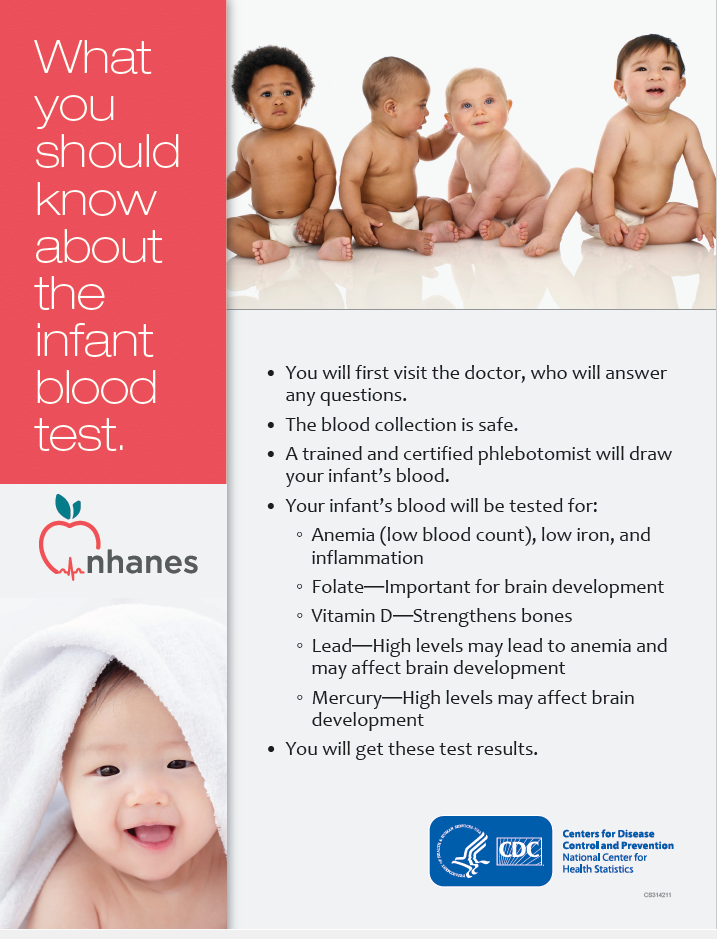Blood - Infants Additional Information
Att 1e Blood Infants - Additional Information 021220.docx
National Health and Nutrition Examination Survey
Blood - Infants Additional Information
OMB: 0920-0950
Attachment 1e
Form Approved
OMB No. 0920-0950
Exp. Date: 11/30/2021
National Health and Nutrition Examination Survey (NHANES)
Blood Draw – Infants (0 to less than 12 months) Pilot Study
Gaining Cooperation Flyer and Talking Points

Gaining Cooperation Talking Points- addressing rationale for pilot study
This study will help us understand how early nutrition and environmental exposures may affect infants’ health.
Nutrition during the earliest stages of life affects growth and development during childhood and may contribute to developing a chronic disease in adulthood. NHANES has been drawing blood from children as young as 12 months old for many years. This has enabled us to gain a better understanding of the health and nutrition for young children. For example, NHANES has helped to show that about half a million children 1-5 years old in the US have lead levels that are of concern (above the recommended limit of <5 µg/dL).
Some natural-occurring elements, such as lead or mercury can be passed on to the infant during breastfeeding. In other instances, infants may be exposed to lead in older homes with lead-based paint or by eating from pottery that may have high lead levels. Currently, there is very little information for infants less than 12 months old on these and other environmental exposures that may affect an infant’s health.
By allowing us to collect blood on your infant, we will be able to begin to add a better understanding of the health and nutrition of infants in our nation. We will provide to you a written copy of your infant’s results:
Complete Blood Count (CBC): We will check your infant’s hemoglobin level which may tell if your infant is anemic (has a low blood count).
Signs of low iron: Iron is an essential nutrient that is vital for growth and development. We will do tests called ferritin and transferrin receptor that will tell us if your infant may have low iron.
Folate: Essential nutrient for your infant’s brain development
C-Reactive Protein: High levels of this may be a sign of inflammation.
Vitamin D: Vitamin D is essential for absorbing calcium and phosphorus, low levels may result in softening or weakening of your infant’s bones.
Lead: This is an element found in the environment that may lower iron levels and lead to anemia (low blood count) and may also affect brain development at high levels.
Mercury: Exposure to this environmental element is often from eating fish or seafood and high levels may affect an infant’s brain and nervous system.
There are a few other tests that we will not report the results to you: selenium, manganese, cadmium, alpha-1-acid glycoprotein, and retinol binding protein. For these tests, reference ranges have not been determined for infants less than 12 months of age; therefore, we don’t know what the results might mean at this age of life.
| File Type | application/vnd.openxmlformats-officedocument.wordprocessingml.document |
| File Title | Attachment A |
| Author | vlb2 |
| File Modified | 0000-00-00 |
| File Created | 2021-01-14 |
© 2026 OMB.report | Privacy Policy